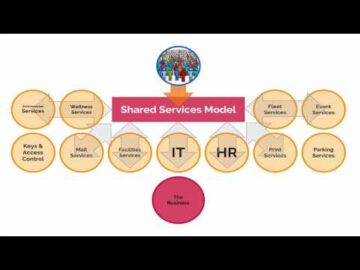Fixed assets (also called property, plant and equipment) are tangible assets that are used in operations of an entity and are not intended for sale. Such assets are expected to provide services to an entity for a number of years and therefore are considered long-term. Suppose a company acquires a new car so that its salespeople can go around selling the company’s products. To calculate yearly depreciation for accounting purposes, the owner needs the car’s residual value, or what it is worth at the end of the ten years. Assume this value is $5,000, and the company uses the straight-line method of depreciation. Accumulated depreciation is commonly used to forecast the lifetime of an item or to keep track of depreciation year-over-year.

You can begin taking depreciation deductions as soon as you place the property in service or when it’s ready and available to use as a rental. The advantages of straight-line depreciation are that it is easy to use, it renders relatively few errors, and business owners can expense the same amount every accounting period. It splits an asset’s value equally over multiple years, meaning you pay the same amount for every year of the asset’s useful life. The second aspect is allocating the price you originally paid for an expensive asset over the period of time you use that asset. When a fully depreciated asset is sold, the accounting treatment is a debit to the account for cumulative depreciation and a credit to the asset account.
E-Commerce Bounce Rate Benchmark
In accounting, we do not depreciate intangible assets such as software and patents. Instead of depreciating such assets, we amortize them which is quite similar to depreciation. But because there are separate accounting rules to consider when applying amortization, most accountants refer to intangible assets as non-depreciable assets. As noted above, businesses can take advantage of depreciation for both tax and accounting purposes. This means they can take a tax deduction for the cost of the asset, reducing taxable income. But the Internal Revenue Service (IRS) states that when depreciating assets, companies must spread the cost out over time.
Declining balance, straight-line, and sum-of-years’ digits are three time-based models. The final factor, units-of-production, is based on the fixed asset’s actual physical utilisation. Investing in stocks, bonds, and real estate can help create wealth over time, providing a long-term return on investment. Other strategies that can be used for increasing un-depreciated assets include setting up a retirement plan, building emergency savings, and putting money into a savings account.
How Do I Know Whether to Amortize or Depreciate an Asset?
A car, truck, van, and other vehicles used for business purposes are depreciable assets. The depreciation is based on factors such as the initial cost, expected usage, and estimated useful life of the vehicle. The term “amortization” typically refers to spreading the cost of an asset over its useful life for depreciation purposes. Non-depreciable assets, such as land and goodwill, do not have a finite useful life and, therefore, cannot be amortized in this way. Three primary methods for calculating asset depreciation are straight-line, declining balance, and hybrid.
- Though different, the concept is somewhat similar; as a loan is an intangible item, amortization is the reduction in the carrying value of the balance.
- Generally speaking, there is accounting guidance via GAAP on how to treat different types of assets.
- Similar to works of art and antiques, collectibles like rare stamps, coins, and baseball cards increase in value due to their scarcity or historical significance.
- Electronics and software can depreciate because they have a finite life and are subject to wear and tear.
You file Form 4562 for depreciation, where Part III, MACRS Depreciation, accounts for your rental property depreciation. Most residential rental property uses GDS, so we’ll focus on that calculation. Economic depreciation is a decrease in the value of the asset due to negative influences, such as an across-the-board drop in real estate prices. Depreciation is the accounting practice of reducing an asset’s value in the books from one year to the next until the end of the asset’s useful life.
What Qualifies As A Depreciable Asset?
For example, if a component requires regular maintenance to maintain its integrity, it could significantly reduce its overall service life expectancy. It is the period during which the asset is expected to generate profits for your company. It means a prediction is made regarding the length of time that the asset will continue to serve its topic no 751 social security and medicare withholding rates intended purpose. After that, there is a possibility that the asset will no longer function cost-effectively or contribute to the operations. Instances in which the usage begins immediately after the acquisition are the easiest to prove. However, there are situations where an asset has been used without being recorded as a fixed asset.
In that case, you would be required to estimate how much it would cost based on the price of a comparable item. The furniture shop will only depreciate any furniture that is for long-term use and isn’t for sale (e.g., a desk in the manager’s office). So, if you depreciate a $900 laptop over its useful life of 3 years, the depreciation amount per year will be $300. Adam Hayes, Ph.D., CFA, is a financial writer with 15+ years Wall Street experience as a derivatives trader. Besides his extensive derivative trading expertise, Adam is an expert in economics and behavioral finance. Adam received his master’s in economics from The New School for Social Research and his Ph.D. from the University of Wisconsin-Madison in sociology.
Non-depreciable assets: Which asset cannot be depreciated?
This principle states that expenses should match the revenue they generate. A business can ensure that the expense matches its revenue correctly by depreciating an asset over its useful life. One way is to allocate the cost of a long-term asset over its useful life. This is done by taking the asset’s original purchase price and dividing it by the number of years in its useful life. When you buy a property to use as a rental—an investment property—you’ll inherit all the costs of maintaining, improving, and managing it. Owning and renting property is considered a business endeavor because you’re generating income from it.

It is also necessary to assess whether any external forces may threaten the longevity or performance of the asset. For instance, exposure to extreme weather conditions or frequent temperature changes can cause certain materials to degrade. If an asset is located in an environment regularly exposed to such conditions, it may not achieve its intended service life expectancy. Depreciation comes from several factors, including the age and type of the asset, how long it serves its purpose, and the asset’s condition at acquisition. Generally speaking, assets that are used more often or in better condition depreciate faster than those that are used less often or in worse condition. Accountingo.org aims to provide the best accounting and finance education for students, professionals, teachers, and business owners.
Credits & Deductions
These assets can only be claimed on taxes as depreciable property if they are used to conduct business or are used by you to produce income. If a property is owned for personal use, perhaps as a vacation home for you and your family, it wouldn’t be considered depreciable. However, if the home is rented out during the months you aren’t occupying it, then you can only depreciate a portion of the property’s cost.
From banking giants to lending up-and-comers — here are the world’s top 200 fintech companies – CNBC
From banking giants to lending up-and-comers — here are the world’s top 200 fintech companies.
Posted: Wed, 02 Aug 2023 04:30:01 GMT [source]
Regarding cost accounting, depreciation is an important concept to understand. While this may seem minor, depreciation can significantly impact a business’s financial statements and tax liability. Although a business can use physical properties such as buildings, vehicles, furniture, and equipment for several years, they do not last forever. The kinds of property that you can depreciate include machinery, equipment, buildings, vehicles, and furniture. If you use property, such as a car, for both business or investment and personal purposes, you can depreciate only the business or investment use portion.
It effectively represents a cash flow benefit for the business, as the taxes saved can be reinvested or used for other purposes. Depreciation only applies to assets that have a limited useful life, such as buildings, machinery, and vehicles. Some Vehicles over 6000 pounds can be deducted 100 Percent using Section 179 and Bonus Depreciation. Depreciation is the gradual wearing down of an asset over time, and it is used to account for the loss in value of an asset due to age, wear and tear, or obsolescence. Depreciation is a non-cash expense, which means that it does not involve any actual cash outflow. The best way to determine which assets can be depreciated and which cannot is by considering factors such as the type of asset, its current value, and estimated useful life.
Land is not depreciated at all, since it is considered to have an infinite lifespan. Some examples of depreciable assets include tangible assets, such as machinery and other equipment. Because items are regarded to be consumed within a single year and expensed within that year, they cannot be depreciated. At the end of the year, accumulated depreciation for the year is shown on the business financial statements, along with the initial cost of all the property being depreciated. Companies take depreciation regularly so they can move their assets’ costs from their balance sheets to their income statements. Neither journal entry affects the income statement, where revenues and expenses are reported.
The sofa is a current asset of the furniture shop because it is for sale which is why it can’t be depreciated. For example, a restaurant purchases a delivery bike and expects to use it for five years. The delivery bike is a depreciable asset of the restaurant because its expected useful life is more than 12 months from its acquisition. Two methods are used to determine depreciation—the General Depreciation System (GDS) or the Alternative Depreciation System (ADS).